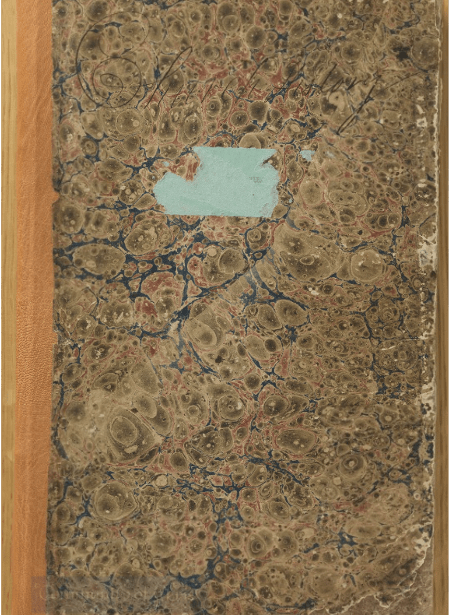Historical Context and Background of D&C 69

Video Overview
Brief Synopsis by Steven C. Harper
Joseph spent the first two weeks of November 1831 in Hiram, Ohio, closely reviewing the revelations and counseling with his brethren about their publication. The Church’s press was in Independence, Missouri. The handwritten copies of the revelations and the money to print them was in Ohio. John Whitmer wrote that “it was in contemplation for Oliver Cowdery to go to Zion and carry with him the Revelations and Commandments, and I also received a revelation to go with him.”1
Seeing that it would not be wise to send Oliver Cowdery alone to Missouri with the invaluable Book of Commandments and quite a bit of cash in his possession, the Lord appointed John as his companion. The Lord, moreover, gave John the command to continue to document the important history of the Church (see section 47) and to be counseled and assisted as church historian by Oliver, William Phelps, and perhaps others in Missouri who know important historical information or were good writers. The missionaries in the field should write about their experiences and send the accounts to Zion for John to use in keeping the Church history. Zion is the place for John to do this work and the Saints to send him their documents. He should, however, travel often to the various branches to gather knowledge. He can preach and explain at the same time he writes, copies, selects, and obtains historical information.

Joseph told the council that the revelations should be prized more than the riches of the earth and that he wanted to dedicate them, together with Oliver and John, to the Lord.2 Then John went faithfully with Oliver to Missouri, carrying with them the revelation to parents in Zion (section 68), the priceless Book of Commandments to be published by William Phelps in Independence, Missouri, and considerable cash for printing and for Bishop Partridge to buy land in Missouri.3
Together with Sections 21 and 47, section 69 gives the commandments to document the history of the Church. In the restored Church of Jesus Christ, history functions much as theology does in other Christian traditions. Latter-day Saints don’t refer to the philosophical creeds of traditional Christianity to describe the nature of God. They tell, rather, of historical events like Joseph’s First Vision, in which God revealed his nature. We know priesthood needed to be restored—and was, because ministering angels brought it to Joseph Smith. We know of these experiences because they are described in documents. Without those documents, we lose what was restored. If we cannot document our history, we are back in the apostasy. Thus, revelations like section 69 are perhaps more important than they might seem.
John Whitmer wrote a history because of sections 47 and 69. It is an important but sketchy source of early Church history. As John’s selfish interests overwhelmed him he became bitter toward the Church in 1838. That is reflected in the last chapters of his brief history. When John stopped writing, Joseph started. With help from a host of assistants, Joseph compiled a much fuller history of the Church to document the Restoration.
1. “John Whitmer, History, 1831–circa 1847,” p. 38, The Joseph Smith Papers, accessed October 5, 2020.
2. “Minutes, 12 November 1831,” p. 18, The Joseph Smith Papers, accessed October 5, 2020.
3. John wrote that he and Oliver left Ohio on November 20, 1831, and arrived safely in Independence, Missouri on January 5, 1832. Book of John Whitmer, 38.
Additional Context by Casey Paul Griffiths
From Doctrine and Covenants Minute
After the November 1–2, 1831, conference to publish the revelations was completed, this revelation assigned John Whitmer to travel to Missouri with Oliver Cowdery, who was earlier commanded to arrange for the printing of the revelations (D&C 68:32). William W. Phelps was already setting up a printing office in Independence, Missouri, and Church leaders planned to print and produce the first bound copies of Joseph Smith’s revelations there. Whitmer was assigned to travel with Oliver Cowdery as part of his assignment as Church Historian (D&C 47).
Whitmer later recorded in his own history, “About this time it was in contemplation for Oliver Cowdery to go to Zion and carry with him the Revelation and Commandments, and I also received a revelation to go with him. We left Ohio, on the 20th of Nov, 1831 and arrived in Zion, Mo. Jan. 5, 1832. When we arrived in Zion we found the saints in as good situation as we could reasonably expect” (John Whitmer History, p. 38, JSP). In the following months, work continued in Missouri on the publication of the revelations. At the same time, storm clouds were gathering over the Saints in Missouri, and the shadow of mob violence was growing. John Whitmer noted in his history that a few weeks after his arrival in Independence, “the enemies held a counsel in Independence, Jackson County, Mo., how they might destroy the saints but did not succeed at this time” (John Whitmer History, p. 38, JSP).

